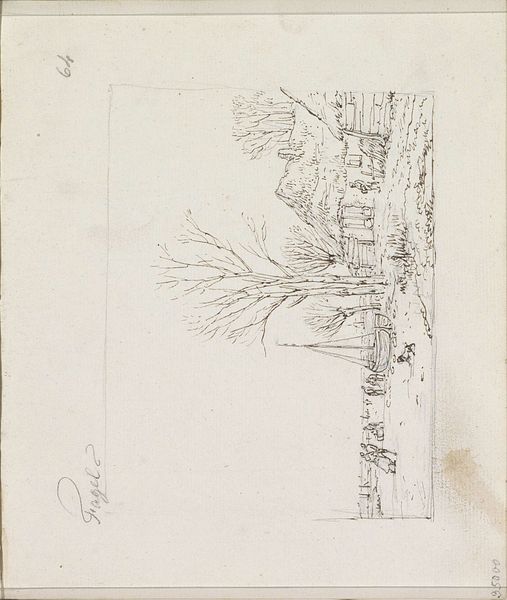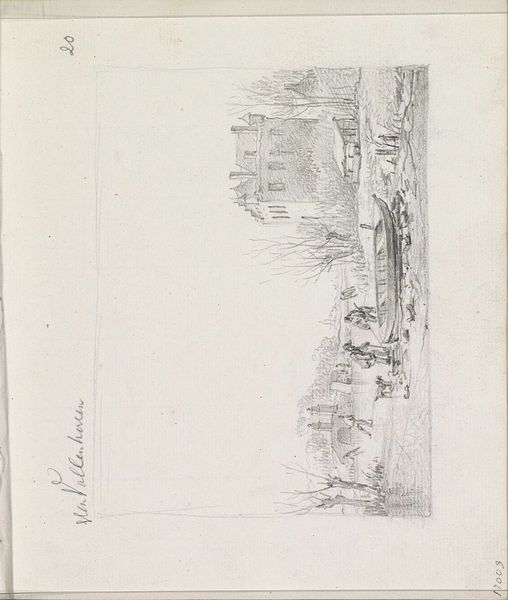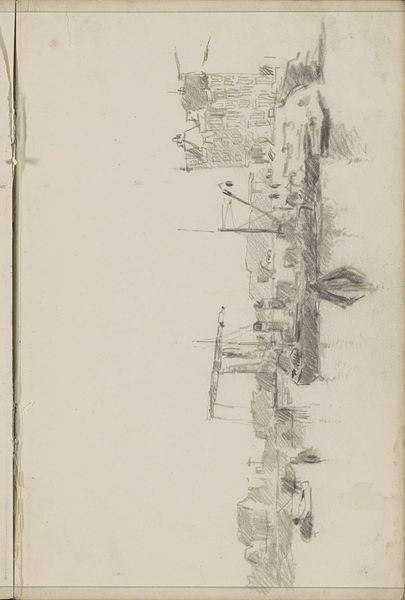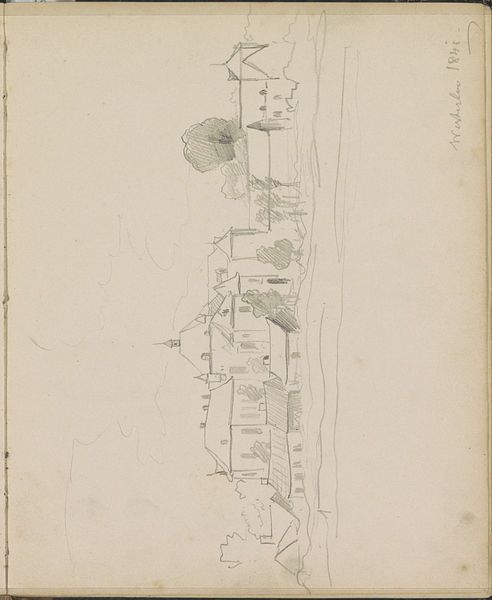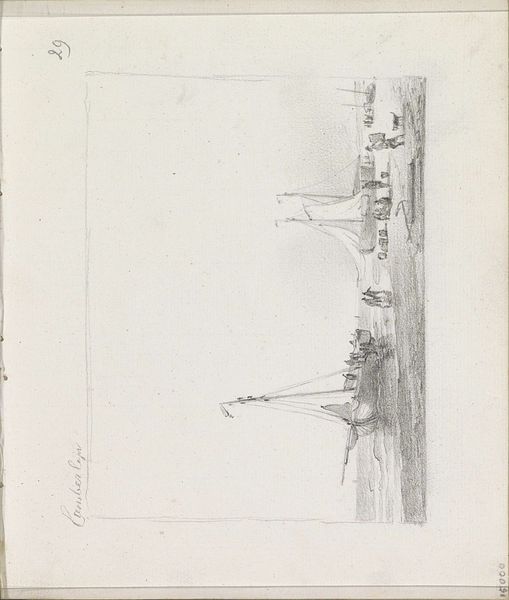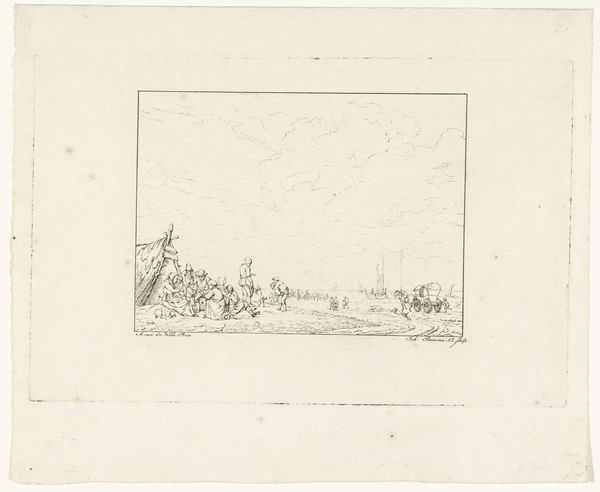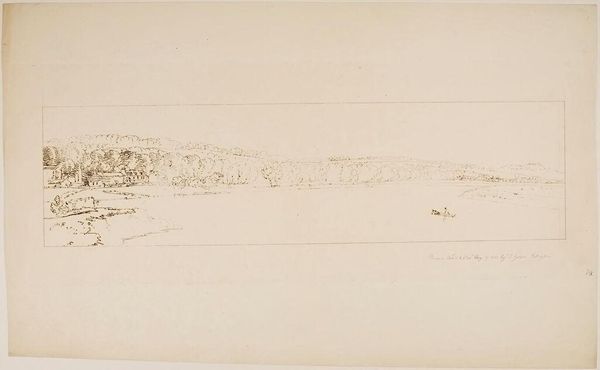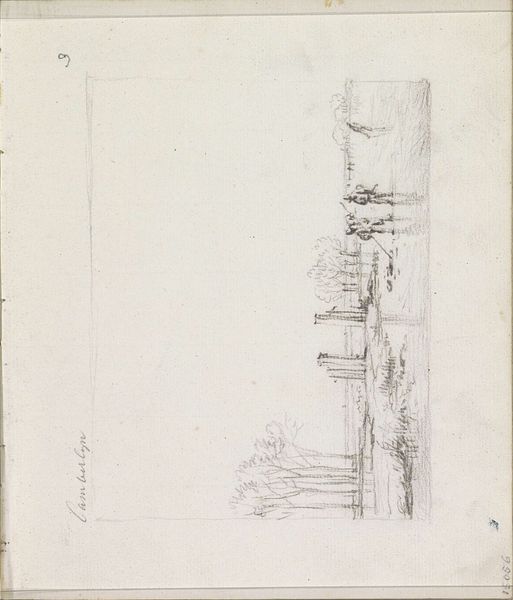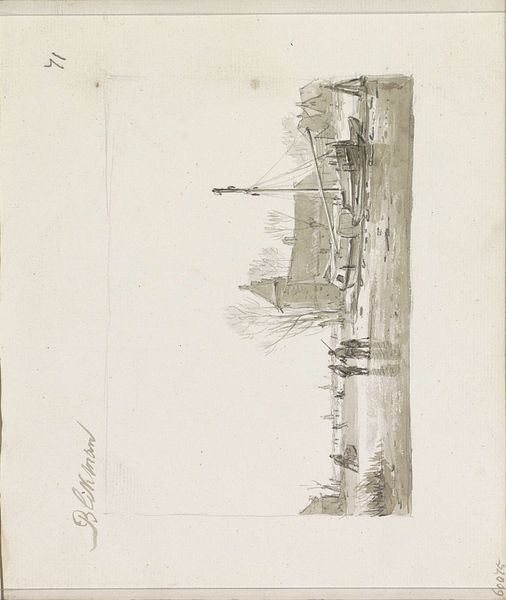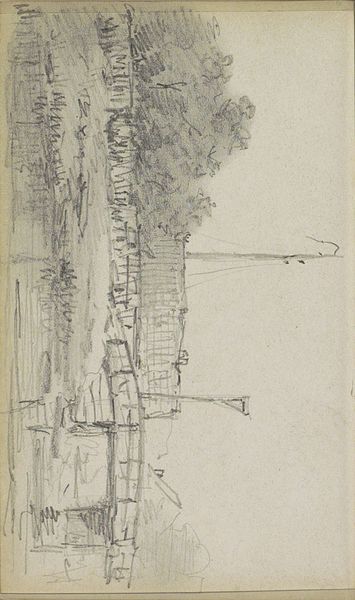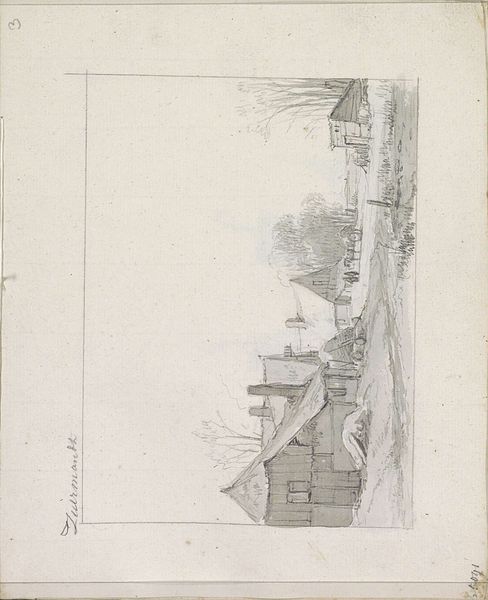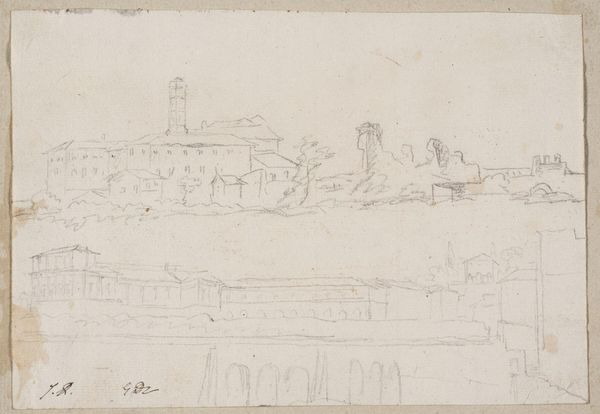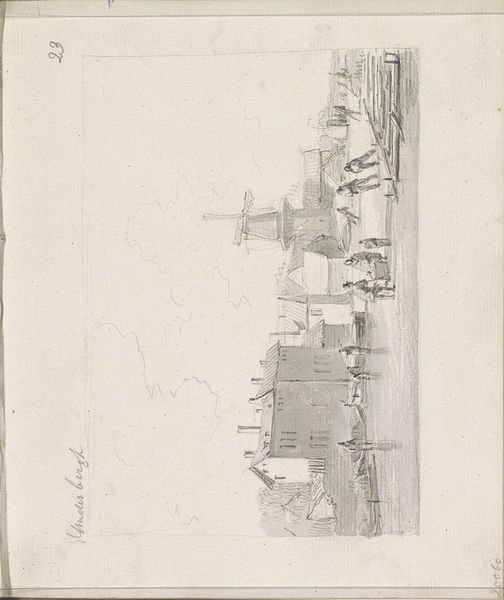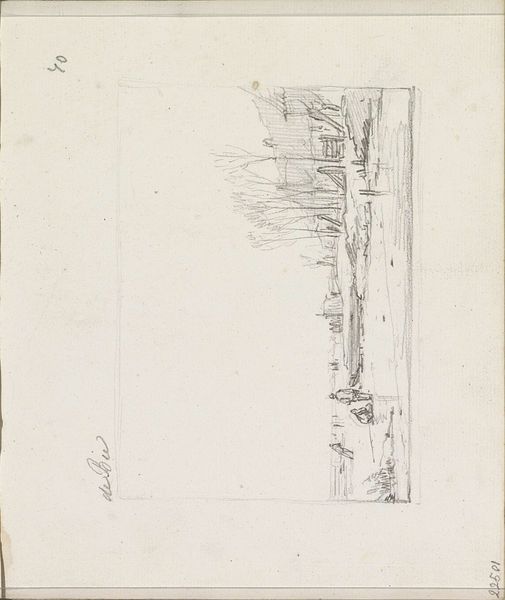
drawing, paper, ink
#
drawing
#
landscape
#
etching
#
paper
#
ink
#
romanticism
#
realism
Copyright: Rijks Museum: Open Domain
Curator: Here we have "Twee bomschuiten op het strand," or "Two Fishing Boats on the Beach," a work rendered in ink on paper by Andreas Schelfhout in 1827. What's your initial impression? Editor: The lines are remarkably delicate, almost skeletal in how they define the ships. It evokes a feeling of transience, as if these vessels and figures might disappear with the next tide. Curator: That sense of transience reflects Schelfhout's broader exploration of the relationship between humanity and nature within the context of early 19th-century Dutch society. These fishing boats weren't just objects; they represented livelihoods, the backbone of many coastal communities. Editor: And notice how the composition emphasizes horizontality—the long stretch of beach, the low horizon line—reinforcing this idea of an expansive, almost infinite natural world. It really dwarfs the human presence. Curator: Exactly. The drawing style itself, with its fine lines and emphasis on topographical accuracy, speaks to a growing interest in depicting the Dutch landscape realistically and reflecting national pride during a period of nation-building. It was an active effort to define and depict 'Dutchness' through its landscape and seascapes. Editor: Yet, the loose, almost sketchy quality keeps it from being overly formal or idealized. There's a raw, immediate feel that brings a certain authenticity. The roughness almost romanticizes a sense of decay on the beach. Curator: The placement of this artwork is not neutral. Remember, the Rijksmuseum's establishment also contributed to canonizing certain depictions of Dutch life and history, imbuing artworks such as this with added layers of meaning that might not have been initially intended by Schelfhout himself. Editor: Yes, reflecting on the broader implication it is true the context gives artwork new perspectives. I find I now consider the implications of those lines even further thanks to this analysis. Curator: Indeed, by appreciating these vessels not only as art but also through a socio-historical lens, we understand more deeply both the piece and the forces that helped produce the work.
Comments
No comments
Be the first to comment and join the conversation on the ultimate creative platform.
